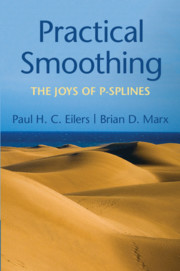Refine search
Actions for selected content:
48572 results in Computer Science
RSL volume 14 issue 1 Cover and Back matter
-
- Journal:
- The Review of Symbolic Logic / Volume 14 / Issue 1 / March 2021
- Published online by Cambridge University Press:
- 24 June 2021, pp. b1-b5
- Print publication:
- March 2021
-
- Article
-
- You have access
- Export citation
LOCALLY RISK-MINIMIZING HEDGING FOR EUROPEAN CONTINGENT CLAIMS WRITTEN ON NON-TRADABLE ASSETS WITH COMMON JUMP RISK
-
- Journal:
- Probability in the Engineering and Informational Sciences / Volume 36 / Issue 3 / July 2022
- Published online by Cambridge University Press:
- 01 March 2021, pp. 581-605
-
- Article
- Export citation
Preparation burning may not improve short-term seed survival in an Amazonian savanna
-
- Journal:
- Experimental Results / Volume 2 / 2021
- Published online by Cambridge University Press:
- 01 March 2021, e12
-
- Article
-
- You have access
- Open access
- HTML
- Export citation
The 35th Year of AI EDAM: Where are We Heading?
-
- Article
-
- You have access
- HTML
- Export citation
AIE volume 35 issue 1 Cover and Front matter
-
- Article
-
- You have access
- Export citation
Functional disability and the role of children in U.S. older adults’ core discussion networks
-
- Journal:
- Network Science / Volume 9 / Issue 2 / June 2021
- Published online by Cambridge University Press:
- 26 February 2021, pp. 194-212
-
- Article
- Export citation
Ready, Set, Verify! Applying hs-to-coq to real-world Haskell code
- Part of
-
- Journal:
- Journal of Functional Programming / Volume 31 / 2021
- Published online by Cambridge University Press:
- 26 February 2021, e5
-
- Article
-
- You have access
- Export citation
Sampling methods and estimation of triangle count distributions in large networks
-
- Journal:
- Network Science / Volume 9 / Issue S1 / October 2021
- Published online by Cambridge University Press:
- 26 February 2021, pp. S134-S156
-
- Article
- Export citation
Microseismic event detection in large heterogeneous velocity models using Bayesian multimodal nested sampling
-
- Journal:
- Data-Centric Engineering / Volume 2 / 2021
- Published online by Cambridge University Press:
- 26 February 2021, e1
-
- Article
-
- You have access
- Open access
- HTML
- Export citation
AIE volume 35 issue 1 Cover and Back matter
-
- Article
-
- You have access
- Export citation

Practical Smoothing
- The Joys of P-splines
-
- Published online:
- 25 February 2021
- Print publication:
- 18 March 2021

Approaches and Frameworks for HCI Research
-
- Published online:
- 24 February 2021
- Print publication:
- 04 March 2021

Networks of Networks in Biology
- Concepts, Tools and Applications
-
- Published online:
- 24 February 2021
- Print publication:
- 01 April 2021
BOLZANO’S MATHEMATICAL INFINITE
- Part of
-
- Journal:
- The Review of Symbolic Logic / Volume 16 / Issue 1 / March 2023
- Published online by Cambridge University Press:
- 22 February 2021, pp. 59-113
- Print publication:
- March 2023
-
- Article
- Export citation
